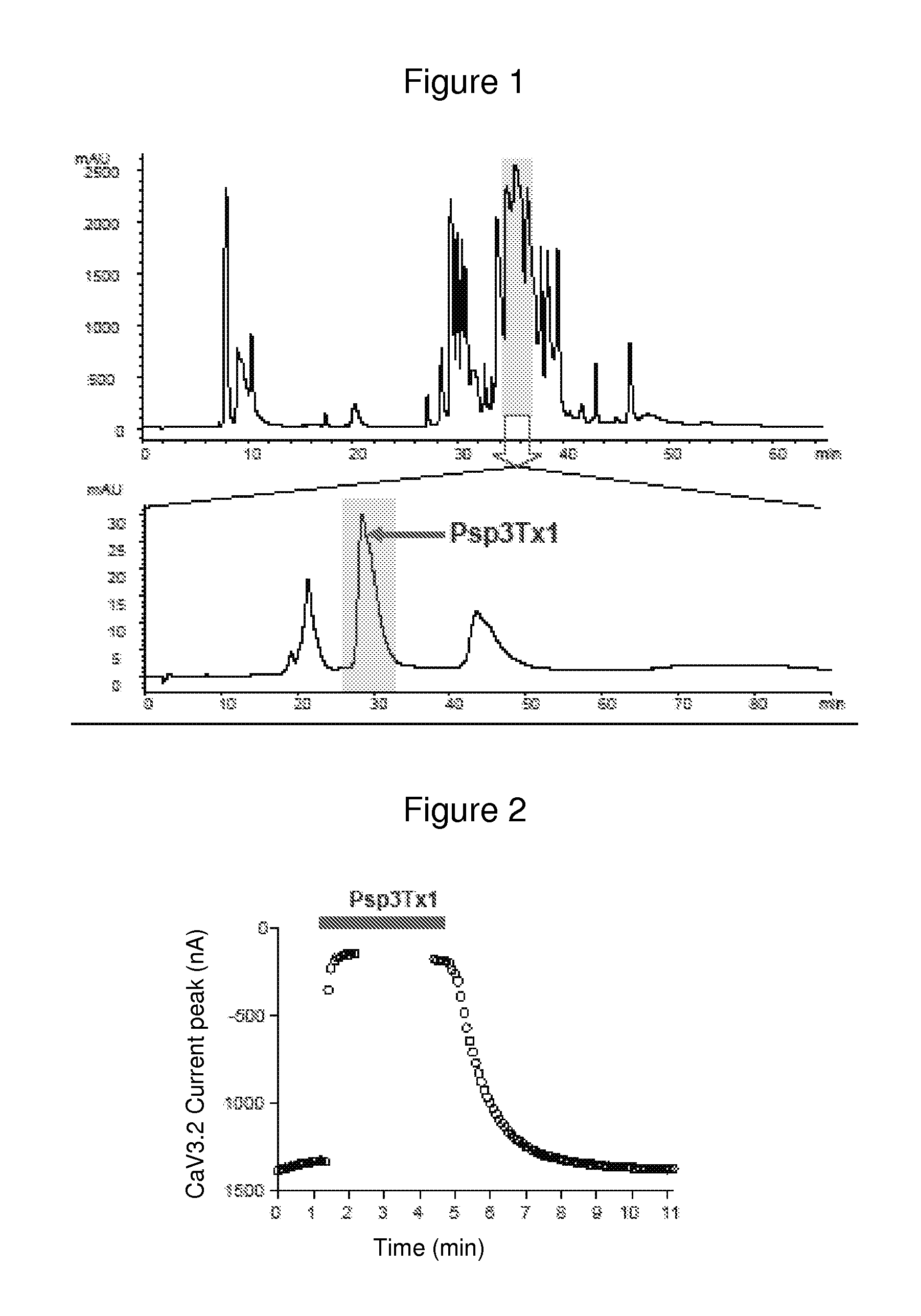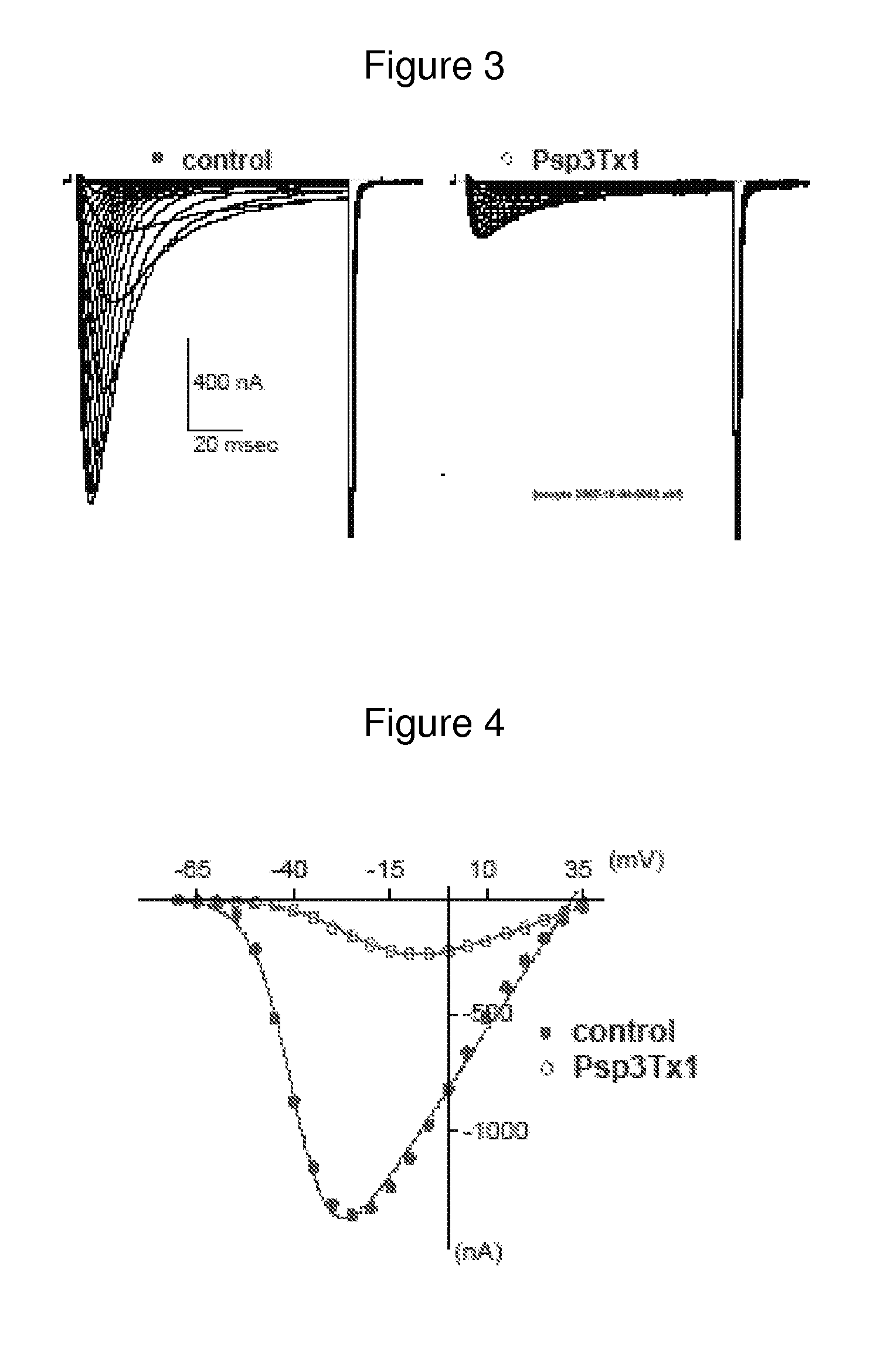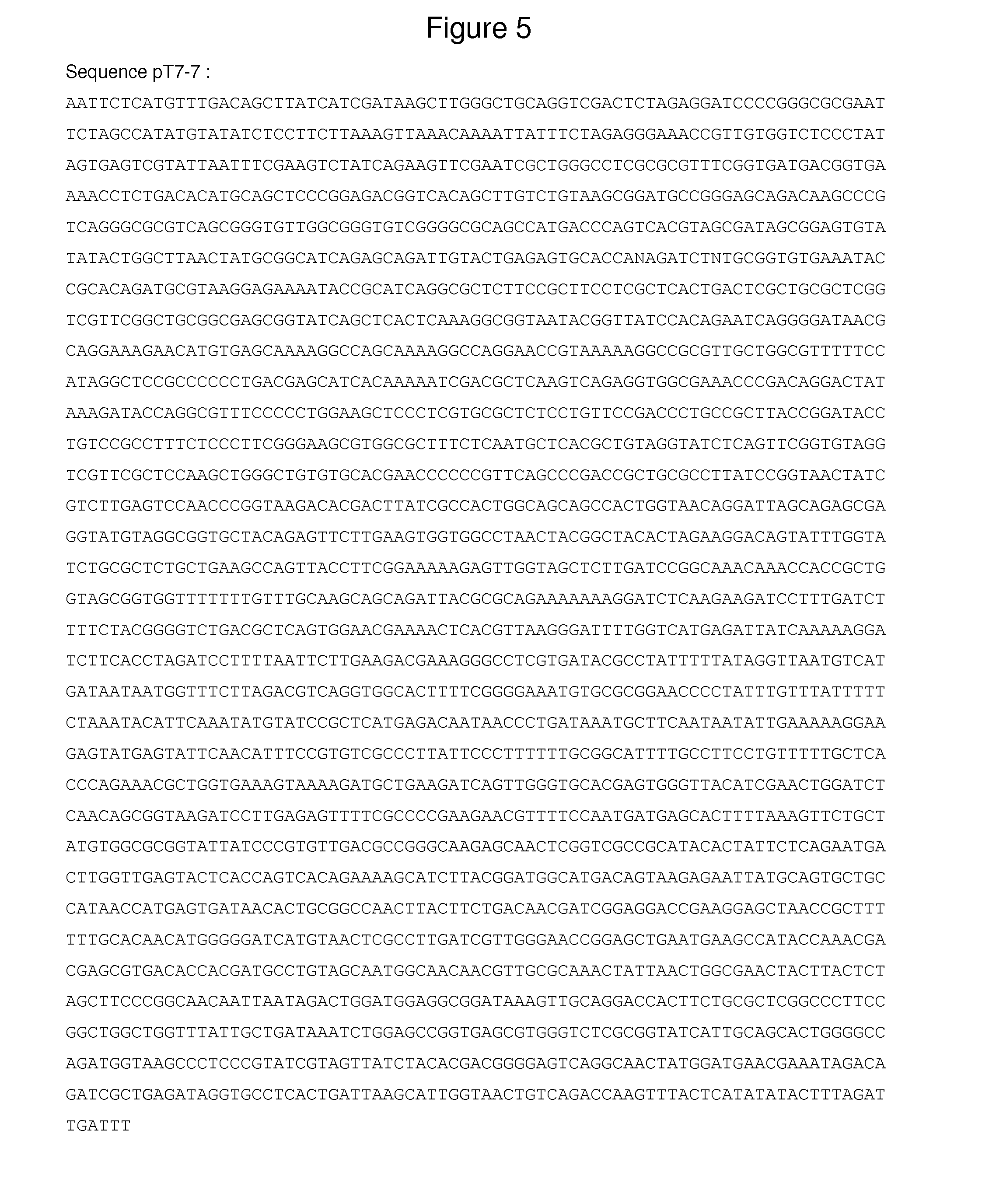Identification of novel antagonist toxins of t-type calcium channel for analgesic purposes
a technology of t-type calcium channel and antagonist toxins, which is applied in the field of toxics, can solve the problems of ineffective drug treatment, hallucinatory phenomena and cardiorespiratory depression, and the association of opiates with undesirable effects, and achieve the effect of inhibiting cellular proliferation and lowering blood pressur
- Summary
- Abstract
- Description
- Claims
- Application Information
AI Technical Summary
Benefits of technology
Problems solved by technology
Method used
Image
Examples
example 1
Characterization of the Peptide of the Invention
[0095]The PARAPHYSA SP3 venom was diluted to 1000th in the extracellular solution used for patch clamp analysis. This solution has the following composition (in mM): NaCl 135, TEACl 20, HEPES 10, CaCl22, MgCl21 (pH 7.3 with TEAOH).
[0096]HEK293 cells were transfected with a pcDNA3 expression plasmid containing the complementary DNA of the human calcium channel Cav3.2 and a reporter gene (CD8) using the jetPEI™ reagent (distributed by the company Q-biogen). After 48 hours of expression, the transfected cells were dispersed with the aid of trypsin and were then seeded at low density on culture dishes for patch clamp analysis.
[0097]The positively transfected cells were identified by means of magnetic beads covered with an anti-CD8 antibody (Dynal) as described previously in Jimenez, C., Bourinet, E., Leuranguer, V., Richard, S., Snutch, T. P. and Nargeot, J. (2000) “Determinants of voltage-dependent inactivation affect Mibefradil block of ...
example 2
Isolation and Sequencing of the Peptide of the Invention
[0104]The venom fractions inhibiting calcium channel activity as presented in the preceding example were isolated and investigation for the component responsible for this inhibition was carried out by successive steps of tests of activity coupled with steps of fractionation.
[0105]The PARAPHYSA SP venom was obtained by electrical stimulation of the chelicerae of adult females. The venom was collected in microtubes, and lyophilized.
[0106]Preparation of the venom for the analyses of activity and for chromatographic separation consisted of dissolving the lyophilizate in ultrapure water to a dilution 10 times that of the initial volume of venom, centrifugation (14 000 revolutions per minute, 20 min) and filtration on a 0.45 μm membrane (SJHVLO4NS Millipore (registered trademark)).
[0107]Purification of the active component of the venom by chromatography: In a first step, an aliquot of 100 μl of the venom dilution (10 μl equivalents o...
example 3
Chemical Synthesis of the Peptide of Sequence SEQ ID NO 1
[0116]The company Altergen (registered trademark) synthesizes the peptide of the invention chemically according to the following protocol: solid-phase synthesis according to the Merifield technique, Fmoc strategy.
[0117]The inhibitory activity of the peptide identified in example 2 has been tested in vitro on various T-type calcium channels (results not supplied).
PUM
 Login to View More
Login to View More Abstract
Description
Claims
Application Information
 Login to View More
Login to View More - R&D
- Intellectual Property
- Life Sciences
- Materials
- Tech Scout
- Unparalleled Data Quality
- Higher Quality Content
- 60% Fewer Hallucinations
Browse by: Latest US Patents, China's latest patents, Technical Efficacy Thesaurus, Application Domain, Technology Topic, Popular Technical Reports.
© 2025 PatSnap. All rights reserved.Legal|Privacy policy|Modern Slavery Act Transparency Statement|Sitemap|About US| Contact US: help@patsnap.com



